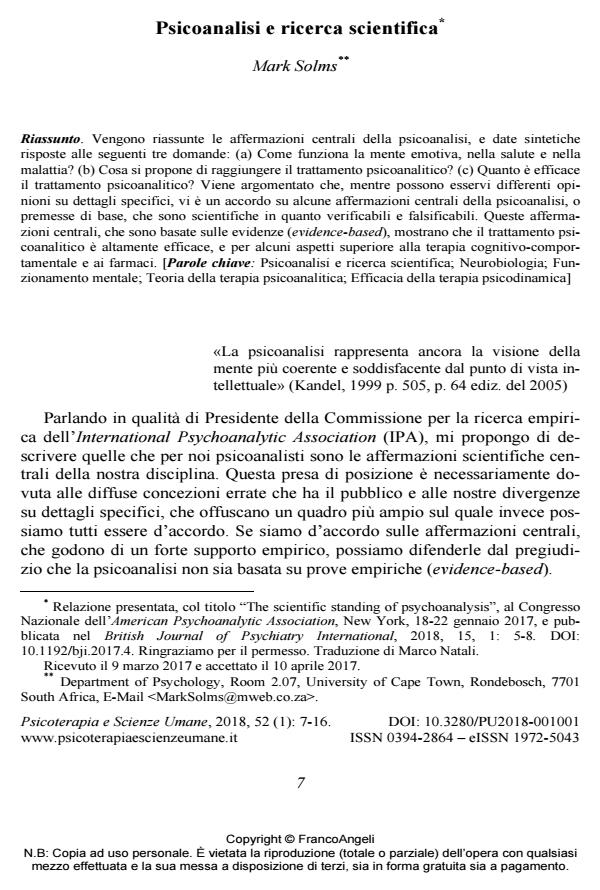Psicoanalisi e ricerca scientifica
Titolo Rivista PSICOTERAPIA E SCIENZE UMANE
Autori/Curatori Mark Solms
Anno di pubblicazione 2018 Fascicolo 2018/1
Lingua Italiano Numero pagine 10 P. 7-16 Dimensione file 80 KB
DOI 10.3280/PU2018-001001
Il DOI è il codice a barre della proprietà intellettuale: per saperne di più
clicca qui
Qui sotto puoi vedere in anteprima la prima pagina di questo articolo.
Se questo articolo ti interessa, lo puoi acquistare (e scaricare in formato pdf) seguendo le facili indicazioni per acquistare il download credit. Acquista Download Credits per scaricare questo Articolo in formato PDF

FrancoAngeli è membro della Publishers International Linking Association, Inc (PILA)associazione indipendente e non profit per facilitare (attraverso i servizi tecnologici implementati da CrossRef.org) l’accesso degli studiosi ai contenuti digitali nelle pubblicazioni professionali e scientifiche
Vengono riassunte le affermazioni centrali della psicoanalisi, e date sintetiche risposte alle seguenti tre domande: (a) Come funziona la mente emotiva, nella salute e nella malattia? (b) Cosa si propone di raggiungere il trattamento psicoanalitico? (c) Quanto è efficace il trattamento psicoanalitico? Viene argomentato che, mentre possono esservi differenti opinioni su dettagli specifici, vi è un accordo su alcune affermazioni centrali della psicoanalisi, o premesse di base, che sono scientifiche in quanto verificabili e falsificabili. Queste affermazioni centrali, che sono basate sulle evidenze (evidence-based), mostrano che il trattamento psicoanalitico è altamente efficace, e per alcuni aspetti superiore alla terapia cognitivo-comportamentale e ai farmaci.
Parole chiave:Psicoanalisi e ricerca scientifica; Neurobiologia; Funzionamento mentale; Teoria della terapia psicoanalitica; Efficacia della terapia psicodinamica
Mark Solms, Psicoanalisi e ricerca scientifica in "PSICOTERAPIA E SCIENZE UMANE" 1/2018, pp 7-16, DOI: 10.3280/PU2018-001001